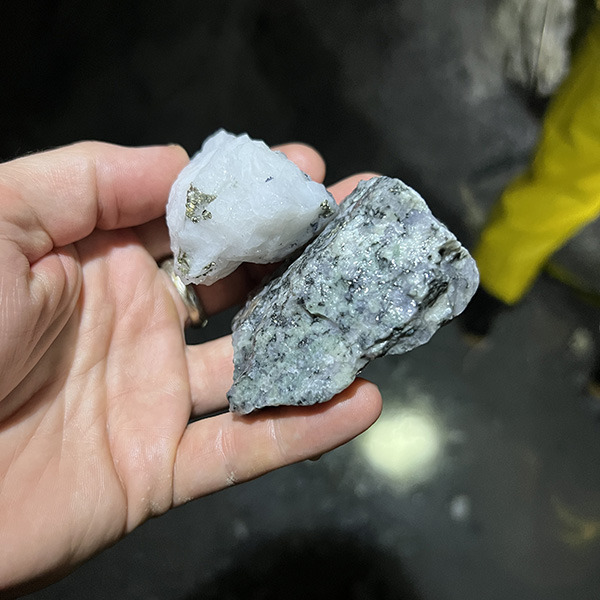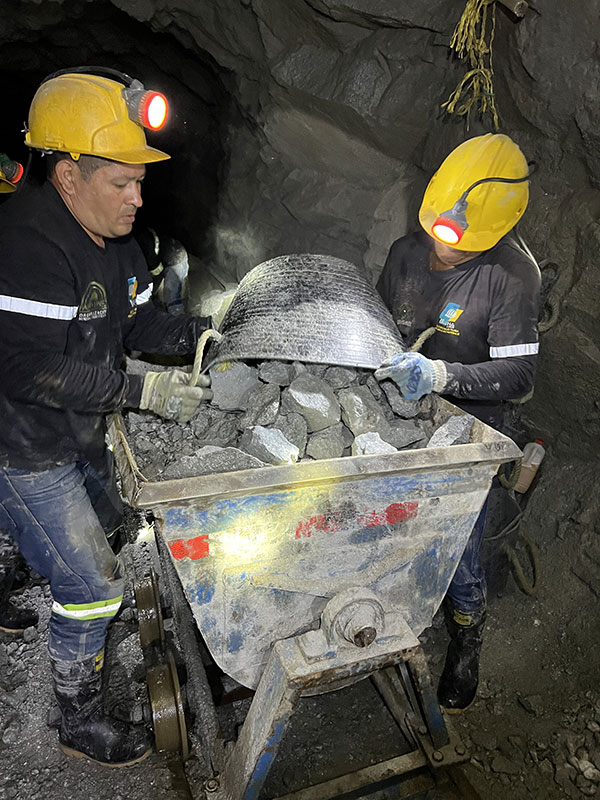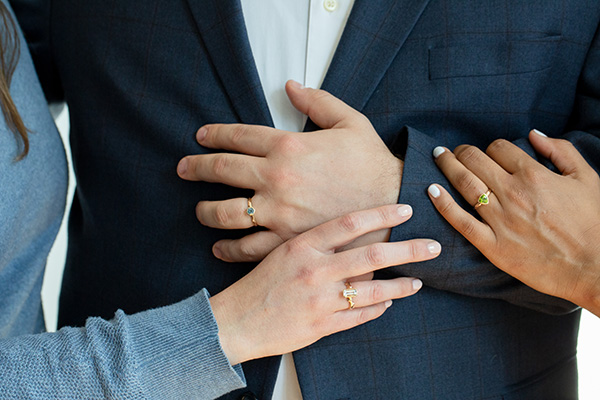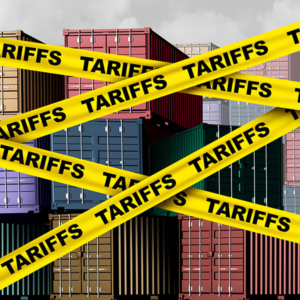
Most American jewelers are familiar with Fairmined gold, which entered the U.S. market a decade ago, thanks to the joint efforts of the Alliance for Responsible Mining, the Colombia-based organization that administers the Fairmined standard; the North Chesterfield, Va.–based metals refiner Hoover & Strong; and the members of Ethical Metalsmiths, a nonprofit committed to transparent, responsible, and environmentally sound sourcing practices.
But Fairmined silver, which is produced by all of the Fairmined mines in Peru and Colombia as a byproduct of the gold-mining process, does not enjoy the same mainstream reputation.

In early October, JCK caught up with the jeweler Will Nevins-Alderfer, owner of W.R. Metalarts in Brattleboro, Vt., and a member of Ethical Metalsmiths’ Action Coalition, just two days after he returned from a weeklong trip to Colombia, where he visited the Chedé Mine and met with miners from the Iquira Mine, to learn about how both gold and silver are mined responsibly.
“Silver is really complicated,” says Nevins-Alderfer. “A lot of the initiatives focus on gold because it’s more valuable and you can build in more margin for operational costs and refiners can build in for profit. Silver is so much less expensive per gram or ounce that it becomes challenging.
“For every gram of Fairmined gold, they find three grams of Fairmined silver,” he adds. “But they often have to sell it at 50 percent of market value. The industry isn’t set up to benefit the miners. It’s more of a refiner’s game because they’re able to buy it in larger amounts and end up having a lot of power.”

Nevins-Alderfer said the biggest challenge in making Fairmined silver more widespread is that many people don’t want to pay the premium. At the Chicago Responsible Jewelry Conference in August, where he served as a panelist at a session on responsible silver, “we spoke a lot about the true value of something and it’s not just market value,” he says. “It’s a premium product, traceable silver. And traceable silver is more valuable. You’re not just buying the silver, you’re supporting the 57 miners at Chedé.”
Nevins-Alderfer, who specializes in custom designs, mostly for engagement and wedding rings, came by his commitment to responsible silver rather circuitously. “An ethos-driven company always felt important to me,” he says. “Early on, I felt using recycled metal was important as well as sourcing local. I tried to connect with local cutters.
“Then I became a member of Ethical Metalsmiths and learned recycled wasn’t what I thought it was,” he adds. “You get a lot more impact with positive mining and we decided recycled didn’t actually reduce demand for new metal. Three years ago, the big shift was when I became Fairmined-certified and focused on how to buy gold the ethical way.”

When he began to explore the alloys that were available to him, Nevins-Alderfer learned that the certification of Fairmined doesn’t require the use of Fairmined silver to make the alloy—“and that kind of irked me,” he says. “I wanted to do more. I thought to myself, If I’m using Fairmined gold, I want to use Fairmined silver as well.”
Without access to any suppliers of Fairmined silver for alloys, Nevins-Alderfer decided to create his own, going above and beyond the certification. As of the beginning of 2023, every piece that emerges from the W.R. Metalarts workshop comes with documentation specifying where the gold and silver in its alloy came from.
“Fairmined silver is available for anyone to buy in the industry,” he says. “You don’t have to be licensed or certified to use it. [The regulation is] just around using the term Fairmined, and making sure anyone making the claims is certified and licensed as a Fairmined supplier. So anyone is welcome to buy it and talk about it as artisanally small-scale mined silver or gold.”
Nevins-Alderfer is convinced that by embracing Fairmined silver, the industry would actually do more good than it currently does working with Fairmined gold.
“Silver is especially important to focus on because it’s on the small-scale level and silver mining uses a lot more mercury than gold,” due to gold’s greater density and much greater value, he says.
“Gold is so dense, to get an ounce of gold they can use an ounce of mercury,” Nevins-Alderfer says. “But for one ounce of silver, you’d have to use 2.5 times the amount of mercury. And also, because it’s so much cheaper—to get $100 worth of gold vs. $100 of silver, you’re using much more mercury to get to the same monetary value.”
Top: A hunk of Fairmined silver ore mined in Colombia (photo courtesy of Will Nevins-Alderfer)
- Subscribe to the JCK News Daily
- Subscribe to the JCK Special Report
- Follow JCK on Instagram: @jckmagazine
- Follow JCK on X: @jckmagazine
- Follow JCK on Facebook: @jckmagazine






